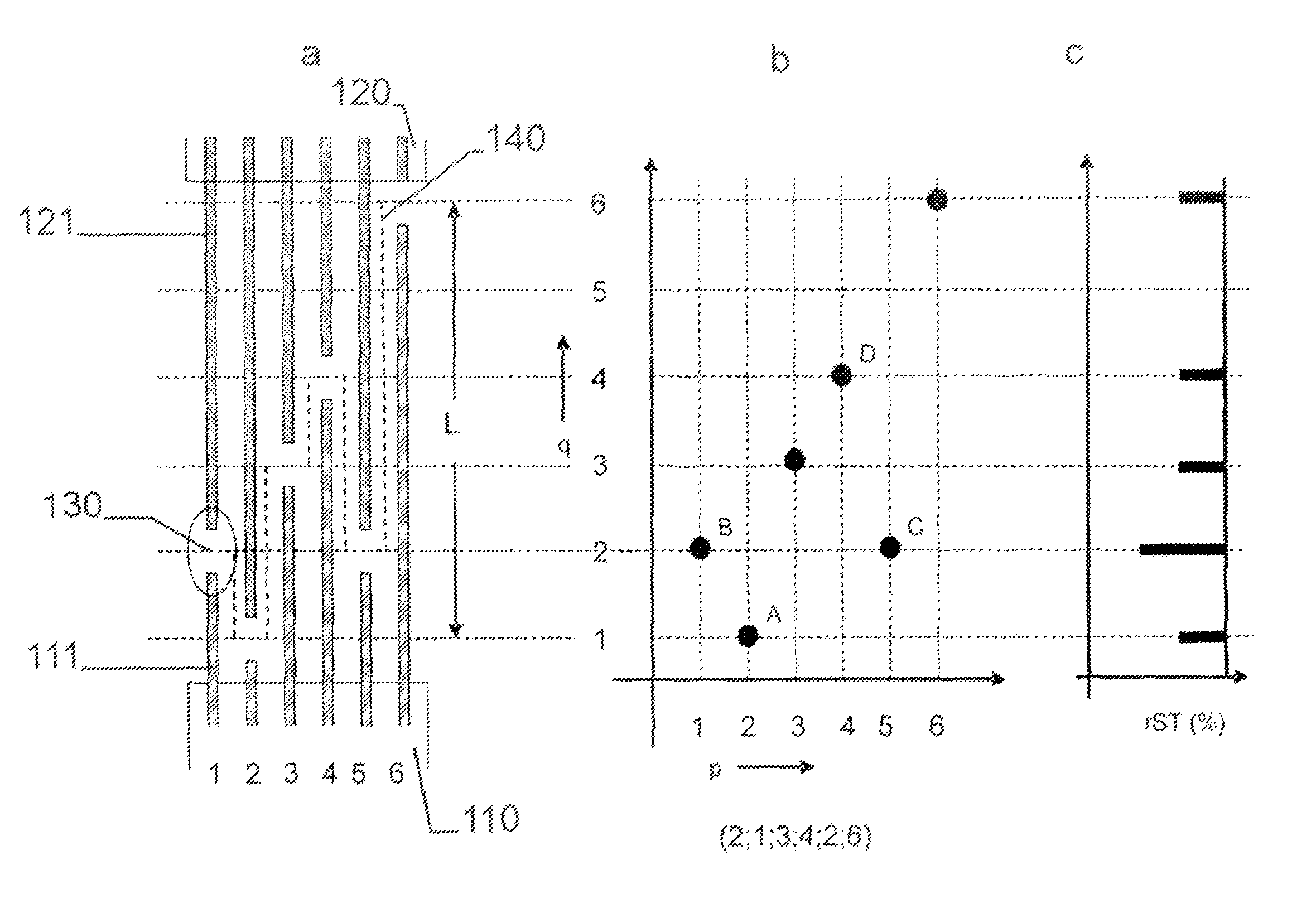Lay-out for splicing strips comprising cords
a technology of connecting strips and splicing strips, which is applied in the field of splicing strip layout schemes, can solve the problems of not being able to use strips with mainly axial reinforcement, not being practicable, and not being able to achieve the effect of strip breaking load, easy integration into a strip, and no difference in bending behavior
- Summary
- Abstract
- Description
- Claims
- Application Information
AI Technical Summary
Benefits of technology
Problems solved by technology
Method used
Image
Examples
Embodiment Construction
[0066]In a first step for implementing the invention one must find those arrangements which fulfil the requirement of having a taxi-distance between abutments larger than four, or five or six, possibly up to nmax. How can now such an optimum arrangement be found in this universe of NN different arrangements?
[0067]Obviously, not the way to go is to enumerate all possible arrangements NN and test each pair in the arrangement whether the distance requirement is met. Per test there are N×(N−1) / 2 comparisons to be done. Such a procedure is only possible for very small N.
[0068]Alternatively, one could try by trial and error in order to find an arrangement that suits the requirement. This could be done for example by means of a Monte-Carlo type of procedure: generate N random numbers in the set of 1 to N and check whether they fulfil the requirement. This could be further improved by introducing a ‘stochastic cooling’ algorithm that accepts changes in the arrangement that increase pairs-wi...
PUM
| Property | Measurement | Unit |
|---|---|---|
| diameter | aaaaa | aaaaa |
| tensile strength | aaaaa | aaaaa |
| length | aaaaa | aaaaa |
Abstract
Description
Claims
Application Information
 Login to View More
Login to View More - R&D
- Intellectual Property
- Life Sciences
- Materials
- Tech Scout
- Unparalleled Data Quality
- Higher Quality Content
- 60% Fewer Hallucinations
Browse by: Latest US Patents, China's latest patents, Technical Efficacy Thesaurus, Application Domain, Technology Topic, Popular Technical Reports.
© 2025 PatSnap. All rights reserved.Legal|Privacy policy|Modern Slavery Act Transparency Statement|Sitemap|About US| Contact US: help@patsnap.com


